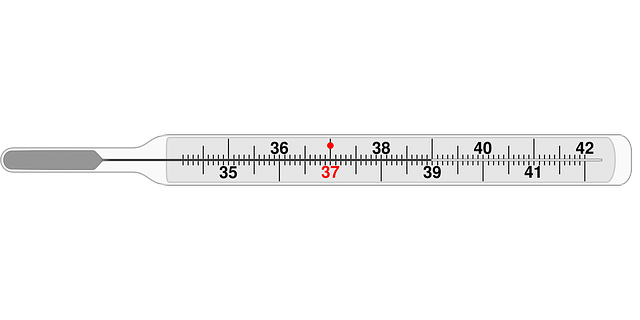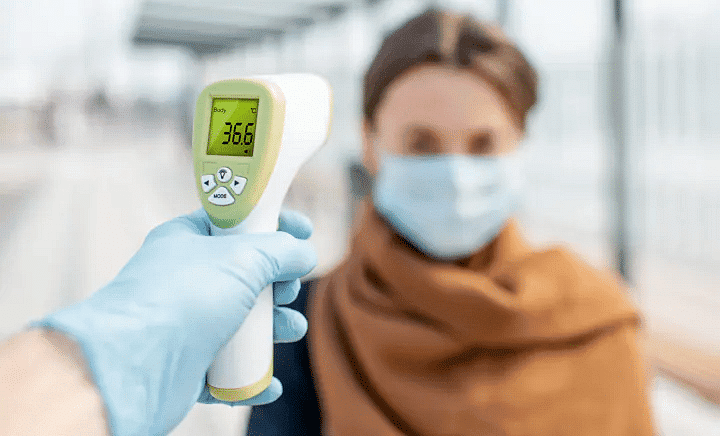MCQ & Extra Questions: Temperature and its Measurement | Science Class 6 PDF Download
Extra Questions
Q1: What is the normal temperature of a healthy human body in Celsius?
The normal body temperature for a healthy adult is approximately 37°C.
Q2: What liquid is generally used in laboratory thermometers?
Laboratory thermometers generally use alcohol or mercury.
Q3: What is the SI unit of temperature?
Kelvin (K).
Q4: Can a clinical thermometer be used to measure the temperature of boiling water?
No, because its temperature range does not extend to the temperature of boiling water.
Q5: What type of thermometer is commonly used to measure human body temperature?
Clinical thermometer

Q7: How does a clinical thermometer work, and why should it not be used to measure temperatures outside the human body?
A clinical thermometer measures temperature using heat sensors or mercury expansion. It should not be used to measure temperatures outside the human body because it is calibrated only within the human body temperature range.
Q8: Explain the precautions that need to be taken while using a digital clinical thermometer.
Precautions include washing the tip with soap and water before and after use, not holding the thermometer by the tip, and ensuring the digital display does not come into contact with water.
Q9: How should a clinical thermometer be cleaned before use?
It should be cleaned with an antiseptic solution or alcohol swab to ensure hygiene.
Q10: What temperature range does a digital clinical thermometer typically cover?
A digital clinical thermometer typically covers a temperature range from 32°C to 43°C.
Multiple Choice Questions
Q1: What is the main reason digital clinical thermometers are preferred over mercury thermometers?
a) They are more accurate
b) They are cheaper
c) Mercury is toxic and difficult to dispose of
d) They can measure higher temperatures
Ans: c) Mercury is toxic and difficult to dispose of
Digital clinical thermometers are preferred over mercury thermometers because mercury is toxic and poses disposal challenges if the thermometer breaks. Digital thermometers do not have this risk and provide easier-to-read results.
Q2: Which scale of temperature is most commonly used in scientific work?
a) Celsius
b) Fahrenheit
c) Kelvin
d) Rankine
Ans: c) Kelvin
The Kelvin scale is the SI unit of temperature and is most commonly used in scientific work.
Q3: Which thermometer is used during the COVID-19 pandemic to measure temperature from a distance?
a) Clinical thermometer
b) Digital thermometer
c) Infrared thermometer
d) Mercury thermometer
Ans: c) Infrared thermometer
Infrared thermometers can measure temperature from a distance, reducing the risk of spreading diseases.

Q4: What is the smallest value that can be measured by the laboratory thermometer shown in the document?
a) 0.1 °C
b) 0.5 °C
c) 1 °C
d) 2 °C
Ans: c) 1 °C
The smallest division on the laboratory thermometer shown in the document reads 1 °C.
Q5: Why can't a clinical thermometer measure the temperature of ice?
a) The temperature is too high.
b) The thermometer will break.
c) Ice temperature is outside the clinical thermometer's range.
d) The thermometer is too small.
Ans: c) Ice temperature is outside the clinical thermometer's range.
The range of a clinical thermometer is not sufficient to measure the temperature of ice.
Q7: The Fahrenheit scale shows the normal human body temperature as:
a) 32.0 °F
b) 37.0 °F
c) 98.6 °F
d) 100.0 °F
Ans: c) 98.6 °F
The normal human body temperature on the Fahrenheit scale is 98.6 °F.
Q8: Why is the degree sign not used with the Kelvin scale?
a) It is not necessary.
b) It is a different unit of measurement.
c) Kelvin is an absolute scale.
d) Kelvin doesn't have degrees.
Ans: c) Kelvin is an absolute scale.
Kelvin is an absolute scale, and temperatures are expressed in Kelvin without the degree sign.
Q9: What should be done if a laboratory thermometer breaks?
a) Continue using it.
b) Dispose of it safely.
c) Store it carefully.
d) Use it only for measuring low temperatures.
Ans: b) Dispose of it safely.
If a laboratory thermometer breaks, it should be disposed of safely to prevent any harm, especially if it contains mercury.
Q10: What could be a reason for variations in temperature readings among different students?
a) Different thermometers used.
b) Incorrect method of reading temperature.
c) Environmental factors.
d) All of the above.
Ans: d) All of the above.
Variations in temperature readings could be due to different thermometers, incorrect reading methods, or environmental factors.
|
100 videos|261 docs|49 tests
|
FAQs on MCQ & Extra Questions: Temperature and its Measurement - Science Class 6
| 1. What is temperature and how is it measured? |  |
| 2. What are the common units of temperature measurement? |  |
| 3. How do we convert temperatures between Celsius and Fahrenheit? |  |
| 4. Why is it important to measure temperature accurately? |  |
| 5. What are the different types of thermometers used for temperature measurement? |  |


















